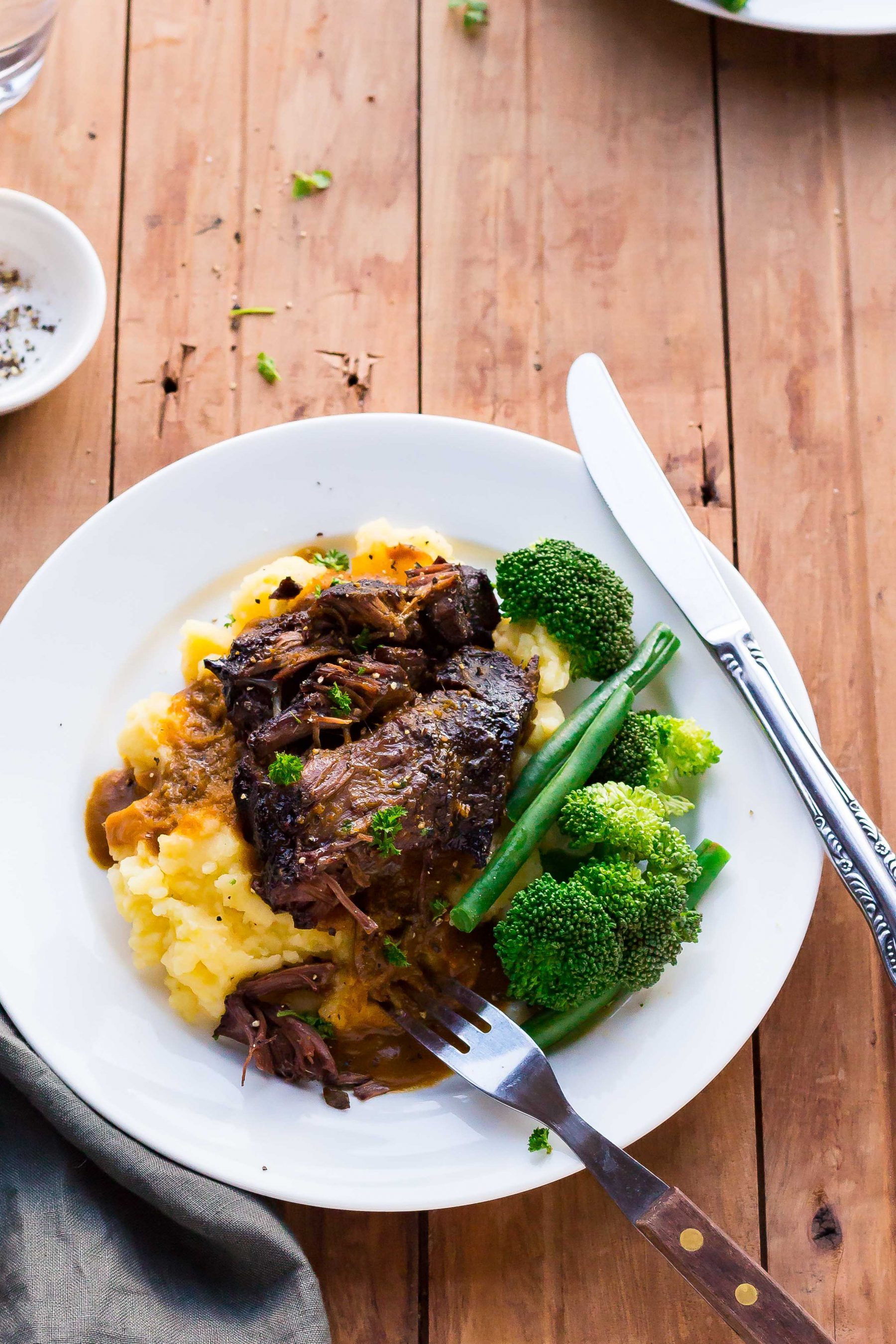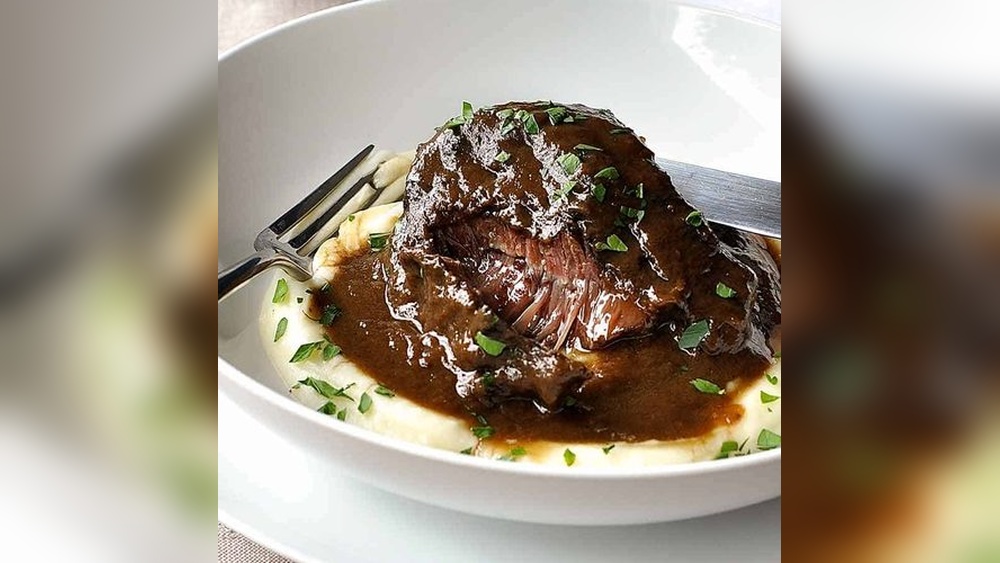If you’ve never tried cooking beef cheeks before, you’re in for a real treat. This cut might not be the most common in your kitchen, but it’s packed with rich flavor and melts in your mouth when cooked right.
The secret? Taking your time and cooking them low and slow to unlock that tender, juicy goodness. Whether you’re aiming for a hearty stew or a luxurious dinner, mastering how to cook beef cheeks will elevate your meals and impress anyone at your table.
Ready to discover simple steps to turn this humble cut into a delicious masterpiece? Let’s dive in!

Choosing Beef Cheeks
Quality beef cheeks should be firm and moist, not dry or slimy. Look for cheeks with a deep red color, which shows freshness. Fat should be white, not yellow, as this indicates freshness too. Avoid cheeks with a strong smell.
Buy beef cheeks from trusted butchers or reliable meat markets. Some grocery stores with a good meat section may carry them. Farmers’ markets can also be a good source for fresh beef cheeks. Ask the seller about the cut and freshness. Frozen beef cheeks are an option if fresh ones are not available.

Preparing The Meat
Start by rinsing the beef cheeks under cold water. Use a sharp knife to remove any excess fat and silver skin. Be gentle to avoid cutting away too much meat. Pat the cheeks dry with a paper towel before seasoning.
For seasoning, simple salt and pepper work well to bring out the natural flavor. You can also add garlic powder or smoked paprika for more taste. Rub the seasoning evenly over all sides of the meat. Let it rest for 15 minutes so the flavors soak in.
Browning For Flavor
Searing techniques create a rich, brown crust on beef cheeks. This crust adds deep flavor and an appealing look. Use a hot pan with a little oil. Pat the meat dry to avoid steaming. Place the beef cheeks carefully and do not move them too soon. Let them brown well on one side before turning.
Benefits of browning include sealing in juices and enhancing taste. The brown crust forms through the Maillard reaction, which brings out savory notes. Browning also improves texture by creating a slight crisp outside while keeping the inside tender. This step helps the beef cheeks develop a more complex flavor during slow cooking.
Cooking Methods
Slow cooking beef cheeks in a pot or slow cooker makes them very tender. Use low heat for 6 to 8 hours. Add broth, herbs, and vegetables for flavor. This method lets the meat soak in the juices.
Using a pressure cooker speeds up the process. It can make beef cheeks tender in about 1 to 1.5 hours. Add liquid and seasonings. Seal the cooker and cook under high pressure. This saves time but still keeps meat soft.
Oven braising is another great way. Brown the cheeks first, then put them in a covered dish with liquid. Cook in a low oven at 300°F (150°C) for 3 to 4 hours. The slow heat breaks down tough fibers for juicy meat.
Flavor Boosters
Beef cheeks become tender and flavorful when cooked with the right herbs and spices. Use rosemary, thyme, and bay leaves for an earthy taste. Garlic and onion add a savory depth that complements the meat well. For a bit of heat and complexity, try black pepper and smoked paprika.
Adding red wine or beef broth during cooking keeps the cheeks moist and enriches the flavor. Aromatics like carrots, celery, and onions create a fragrant base that enhances the dish. Simmering beef cheeks slowly in this mixture lets the flavors blend beautifully.
Achieving Tenderness
Cooking beef cheeks slowly at low heat makes them very tender. This method helps break down the tough muscle fibers. Using a slow cooker or oven at low temperature for several hours is best.
Testing doneness means checking if the meat is soft. Use a fork to gently poke the cheeks. If the fork slides in easily, the beef cheeks are done. The meat should feel tender and juicy, not tough or chewy.
Serving Suggestions
Beef cheeks go well with soft, creamy sides like mashed potatoes or polenta. They also pair nicely with roasted vegetables such as carrots, parsnips, and Brussels sprouts. The rich, tender meat balances well with fresh, crisp salads. A splash of red wine sauce or gravy adds extra flavor.
For presentation, place the beef cheeks on a warm plate. Arrange the sides around the meat to create a colorful display. Garnish with fresh herbs like parsley or thyme to add a fresh look. A drizzle of sauce over the meat and sides makes the dish look inviting and tasty.
Storing And Reheating
Store beef cheeks in an airtight container. Keep them in the fridge for up to three days. For longer storage, freeze them tightly wrapped. Label with the date to track freshness.
Reheat beef cheeks gently to keep them tender. Use a low temperature in the oven or microwave. Cover with foil or a damp paper towel to hold moisture. Avoid high heat that dries out the meat.
Slow reheating in a pan with a bit of broth helps maintain juiciness. Stir occasionally and heat until warmed through. This keeps the beef cheeks soft and flavorful.

Frequently Asked Questions
What Cooking Method Would You Choose When Cooking Beef Cheeks And Why?
Choose slow cooking or braising for beef cheeks to break down tough fibers and achieve tender, flavorful meat.
What’s The Secret To Flavorful Beef Cheeks?
Sear beef cheeks to develop rich flavor. Then slow-cook them with broth, garlic, onions, and spices until tender and juicy.
What Is The Best Way To Tenderize Beef Cheeks?
The best way to tenderize beef cheeks is to cook them low and slow, either by slow roasting, braising, or using a pressure cooker. This breaks down tough fibers, making the meat tender and flavorful. Searing before cooking enhances taste.
Are Beef Cheeks Hard To Cook?
Beef cheeks require slow, low-heat cooking to become tender. They absorb flavors well and are easy to prepare with patience.
Conclusion
Beef cheeks cook best when treated with patience and care. Slow cooking breaks down tough fibers for tender meat. Browning the cheeks first adds rich flavor and color. Use simple spices and broth to enhance the taste. Choose a slow cooker or oven for even cooking.
The result is a soft, flavorful dish that melts in your mouth. Enjoy this unique cut with your favorite sides. Cooking beef cheeks is easy with these steps. Give it a try and savor the difference.

Yes, working as , Food Blogger and Product Reviewer for last 6 years. Here you will get amazing deals for Smart kitchen products. I am your best source for the latest update in cooking trends. I provide insightful articles, reviews, and analysis on cutting-edge kitchen gadget. My mission is to empower readers with the knowledge they need to stay ahead in a rapidly evolving coking world. Join me as we explore the future of food technology and how it shapes our lives today and tomorrow.




